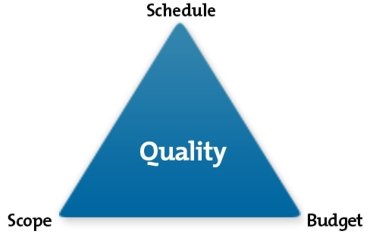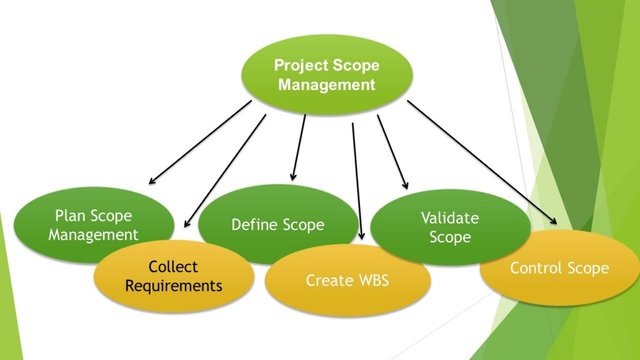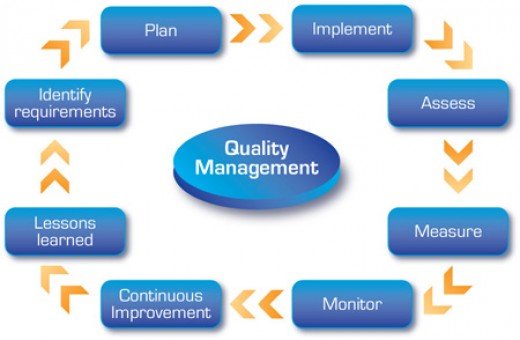The Iron Triangle of Management
My First Steemit Post
Hi there to the everyone in the Steemit community! The below post is my first one on Steemit. I am very excited about trying out this awesome blockchain-social media hybrid. I am a loyalist in terms of the blockchain concept and I stumbled upon Steemit. The below post is one that I posted on Hubpages a while back but I have decided I am going to be moving all my content from HubPages to Steemit as I am tired of waiting for small ad revenues and red tape verification applications by Adsense. All my content is well researched and I hope that you enjoy. Please take it easy on me as this is my first post and I would appreciate some advice in the comments section. Thank You and Enjoy!
Introduction
There are several levels of management. This is not to create a hierarchy but rather to delegate and separate tasks so that these tasks can be completed in an effective and timely manner. Managers are responsible for the teams that are under their supervision. This means that they take full responsibility for any mistakes or conduct of their teams. Managers need to ensure the quality of work, the schedules and the budgets of their team members. The manager must delegate the right tasks to the right people to optimize quality, draw up schedules that maximize use of time and supply a budget that uses the least amount of money to create the highest possible outcome or production. The three key aspects that we will analyse is known as the “iron triangle” or “project management triangle”. The three aspects are; scope, schedule (time), and budget. Quality is the ultimate aim of the project thus this will fall under all three aspects. These are the constraints that limit the quality and outcome of a project.

Schedule (Time)
Every project needs to be effectively managed with reference to the time for each task. The manager must draw up a schedule that will help the team function according to deadlines thereby increasing effectivity of the project. A schedule will include factors such as; time allowed for project completion, micro task deadlines, and employee and team members hours per day/per task. The aim of a schedule is to use the least amount of time to get the most effective output. This is why it is important for managers to do in-depth research in order to allocate the time needed for different tasks effectively. For example, planning a project is quite important and should have a lot of time allocated to it (a few days), whereas drawing a mind map should only take a few hours. Some managers expect these schedules and deadlines to be followed strictly whereas other managers tend to allow flexibility and use the schedule as a guideline rather than a rigid contract.

Budget (Cost)
Another factor that greatly influences a project is the cost of the entire project. The manager allocates the cost for the project by considering all the factors involved in the project. The goal is to find the perfect balance between cost, output and quality. The manager needs to minimize cost while increasing output and keeping a standard of quality of the product or service. When considering the cost aspect, a manager should look at the following factors; salaries and wages, equipment costs, material costs, admin costs, and possible costs for mistakes and errors. These are just a few factors. The costs might differ in relation to the size of the project. For example, a developmental building project will be a lot more expensive than an advertising campaign. Additionally, cost directly relates to time in that the longer the project takes the more the employees will need to be paid for hours worked.

Scope (Aims)
The scope of a project includes the aims, short and long term goals, desired outcomes, possible errors, the plan, implementation, review process and correction process. This is the most difficult challenge for the manager as he she will need to analyse these factors with relation to cost and time. The manager must ensure that the whole team understands the scope of the project and grasp what is required of each of them. This is often the constraint that causes a project to fail as the managers’ aims are unrealistic in relation to the schedule and budget, or the team members/employees do not understand the scope of the project. The scope also includes measures to adapt if and when other factors are altered. For example, if it becomes necessary for the project to be completed a month before the expected date, then the manager will have to increase the amount of employees or machines to compensate for the tight deadline.

Quality-The Ultimate Goal
Quality is the ultimate goal of any project and the above three aspects are the constraints that often limit the quality of a project. The scope, time, and cost all directly affect the quality of the project. Let us look at an example related to cost, the budget of a sole proprietor client for an advertising campaign is only 100 pounds. This will limit the target market and outreach that the campaign can achieve. Let us use the same example with regards to the schedule aspect. A client decides that the campaign must be completed within two weeks. This will cause the manager aim for a lower quality in terms of outreach of the campaign. The manager could also increase the cost towards the client to compensate for the reduced time constraint. So far, we have a client that is willing to spend 100 pounds on a two weeks on an advertising campaign. The manager of the project is now limited to these time and cost barriers. Thus, the manager will need to adjust the scope of the project. He/she may do this by adjusting the cost. The manager can do this by reducing the amount that he/she allocates to each micro task and hiring less qualified employees. This leads to the increased risk of potential errors during the course of the project. The two-week time limit means that the manager would need to adjust the time that he/she allocated for each task. If employees are rushing their tasks, this would decrease the quality of the project.

In contrast, let us consider a large conglomerate. This huge business will have the funding to allocate thousands of pounds towards an advertising campaign that runs over a 6-month period. The manager of the project will have the flexibility to increase the scope of the project thereby increasing the quality of the project.
In conclusion, it is evident that a manager has three constraints, namely; schedule, budget, and scope that will influence the quality of a project. An effective and good manager will use the resources that he/she has to optimize the quality achieved from a project. In a standard circumstance with an average manager, the trend is that the quality of a project will increase in relation to cost and time invested in it. A superior manager can achieve a high quality outcome with a limited amount of resources.
Conclusion
In conclusion, it is evident that a manager has three constraints, namely; schedule, budget, and scope that will influence the quality of a project, and in turn influence each other. An effective and good manager will use the resources that he/she has to optimize the quality achieved from a project. In a standard circumstance with an average manager, the trend is that the quality of a project will increase in relation to cost and time invested in it. A superior manager can achieve a high quality outcome with a limited amount of resources.
The video below will explain in more detail the concepts of the iron triangle of management.
Please feel free to leave your comments and suggestions below! I will happily answer any questions that you may have!
Glad to have you.
(Never heard of HubPages)
Thank you! Glad to be here.
HubPages is a revenue sharing site for writers.
Here is the link to my profile if you want to check it out: http://hubpages.com/@yaseeny15
the fact that you are transferring everything over to Steemit tells me all I need to know about it.